Mild Chili Peppers
For those who want to add some spice to their meals without overwhelming the senses. If you’re looking into making your own hot sauce or adding some color to your meal, this is the place for you. See all types of peppers from A-Z for those with more sensitive taste buds. We have you covered for any and all of the mild peppers from around the world.

Aji Pancha Chili Peppers
Origin: Peru
Use: Condiment; paste, dried, minced. Stews, sauces, fish dishes.
Color: Red-Burgundy
Scoville: 500
Hot Fact: This is a wonderful way to add some color to your diet. Plant them at home or pick them up at the market to add a kick to your next hot sauce or chili.

Anahiem Chili Peppers
Origin: Anaheim, CA
Use: To Make Ristras (A decoration that hangs on porches, fences, stands, and markets for good luck.)
Color: Green and Red
Scoville: 500-1000
Hot Fact: These sweet green and red peppers are festive and edible!
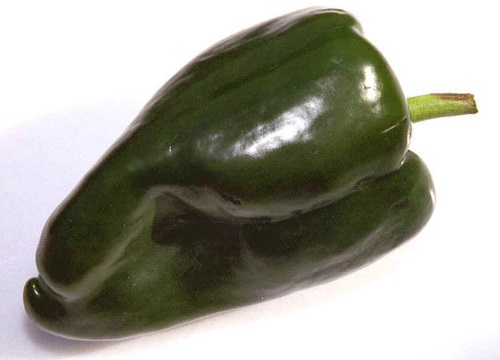
Ancho Chili Peppers
Origin: Puebla, Mexco
Use: Making sauce, rubs, chili
Color: Deep red color or green
Scoville: 1,000-2,000
Hot Fact: These peppers may on the hotter side for those with mild taste buds, but it is still great for chili. If you’re not about jalepeno, throw it in your broth for that extra flavor. Great for mild hot sauce!
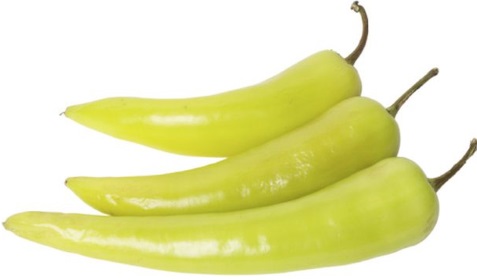
Banana Peppers
Origin: Americas
Use: Salads, pizzas, stuffed with cheese or meat.
Color: Bright Yellow – Bright Green
Scoville: 0-500
Hot Fact: While they are usually green-yellow, these peppers can change color to red or orange as they become ripe.

Hildago Chili Pepper
Origin: Mexico and Central America
Color: Red
Use: pickling, add to any dish for a kick, salsa, sauces.
Hot Fact: This texture is different than other peppers. While usually waxy, this pepper is rather fuzzy.

Carmen Italian Sweet Peppers
Origin: Italy
Use: Roasting, Stuffing
Color: Red
Scoville: 500
Hot Fact: This pepper is also known as Corno De Toro, due to it’s horn-like shape. If you have ever had a stuffed sweet pepper at your favorite Italian restaurant, there is no doubt it was probably one of Carmen’s.

Cascabel Chili Peppers
Origin: Mexico
Use: add to soup, salsa, stew, sauce
Color: Deep Red
Scoville: 1,000-3,000
Hot Fact: People have been known to buy whole pods for dried chili kitchen art!

Chilaca Chili Pepper
Origin: Central Mexico: Guanajuato, Valisco, Zacatecas, Northwestern Regions
Use: Dried for pasilla, sauces, table sauce, condiment
Color: Deep Brown
Scoville: 1,000-2,500
Hot Fact: Pasilla is another world for this chili, which is best used dried. It can also be sold in powdered form.
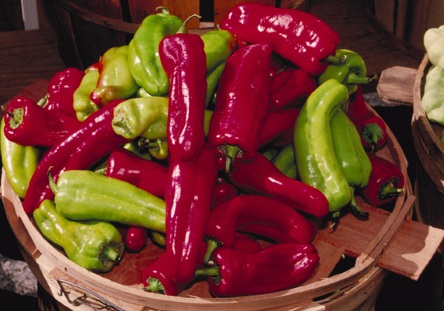
Cubanelle Chili Pepper
Origin: Cuba, Dominican Republic
Color: Green
Use: frying, cooking, sautee
Scoville: 0-1000
Hot Fact: These sweet peppers are known as Italian Frying Peppers. No explanation required.

Dolmalik Chili Pepper
Origin: Turkey
Color: Light Green – Reddish Brown
Use: Powder to season meats
Scoville: 1,000-2,000
Hot Fact: The Dolmalik Chili Pepper is also used for grilling.

Doux Des Landes Chili Pepper
Origin: France
Color: Red
Use: fresh or cooking
Scoville: 0
Hot Fact: This pepper can grow up to over a foot long.
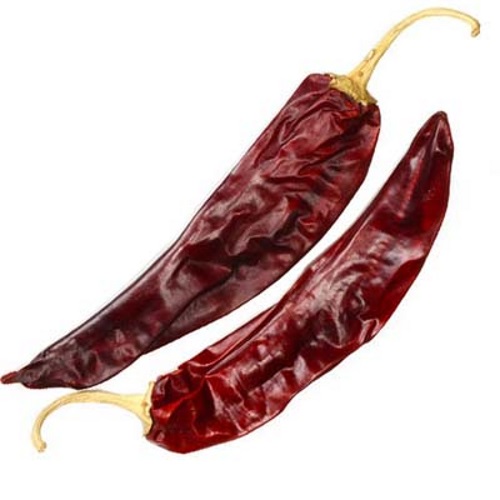
Guajilo Chili Pepper
Origin: Meixco
Scovilles: 2500 – 5000
Color: Reddish brown
Use: Whole, dried,mole sauce, salsa, soup. chile, tamales.
Hot Fact: This pepper heavily populates Mexican food and ranks the spiciest on this list.

Hatch Chili Pepper
Origin: Hatch Valley, New Mexico
Color: Red and Green
Use: Gravy, Chile Verde, Seasoning, Spice, Stuffing, Puree, Baking, Dressing.
Scoville: 1000-2500
Hot Fact: These peppers are named after their location. Hatch Valley is located right on the Rio Grande.
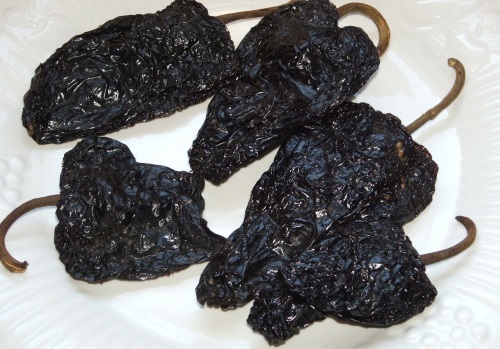
Mulato Chili Pepper
Origin: Mexico
Color: Green
Use: Ground into Chile peppers or sauce.
Scoville: 2500-3000
Hot Fact: 1 of the unholy trinity of peppers used in mole sauce.

NUMEX BIG JIM CHILE PEPPER
Origin: New Mexico
Color: Harvested green, grows to red.
Use : Spice, salsa, salad, roasting, pickling, more!
Scoville: 2500-3000
Hot Fact: The New Mex Big Jim Chile Pepper is one of the peppers grown in Hatch Valley.

NuMex R Naky Chili Pepper
Origin: United States (hybrid.)
Color: Red
Use: Stuffing or roasting
Scoville: 250-750
Hot Fact: This is a hybrid pepper that was discovered by a University of New Mexico professor.
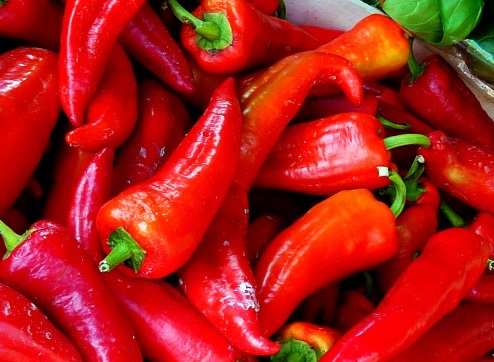
Paprika Chili Pepper
Origin: Hungary
Color: Dark red/brown
Use: Powdered spice
Scoville: 250-1000
Hot Fact: This popular spice is used in chili powder. If you’ve got a sensitive palate, don’t pile on the paprika!
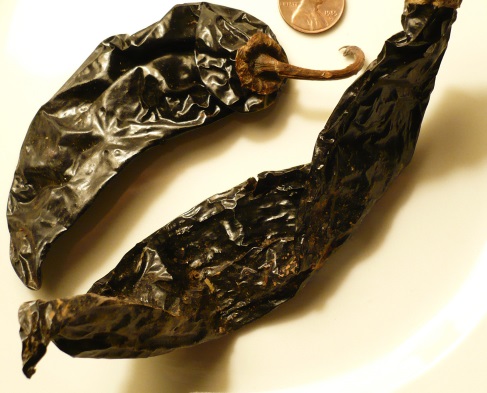
Pasilla Chili Pepper
Origin: Mexico City
Color: Starts out green and goes to brown.
Use: Roasting, cooking, stuffing, frying
Scoville: 250-3999
Hot Fact: Combine this chili in sauces with fruit to balance out the hotness.

Pepperoncini Chili Peppers
Origin: Italy
Color: Yellow-green, green-red
Use: soups, sauces, salads, garnish
Scoville: 100-500
Hot Fact: At only 10 calories a serving, pepperoncinis are perfect for flavor if you’re trying to eat healthy or cut calories.
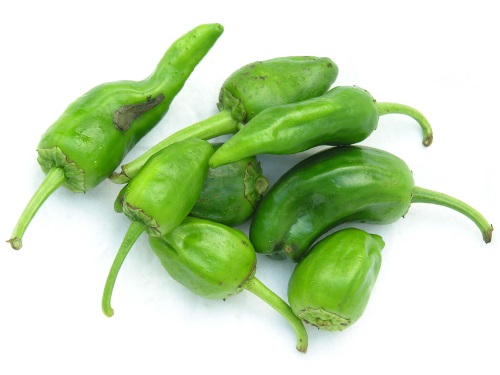
Pimiento de Padron
Origin: Garcia, Padron Spain
Color: Green – Red
Use: fried in oil and served as tapas.
Scoville: 500-2500
Hot Fact: Named after it’s place of origin, it is notable due to the fact it is hot in random places, sweet in others. While usually mild, 10-25% are hot.
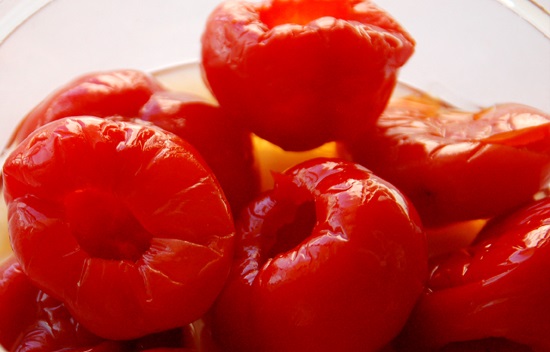
Picante/Peppadew Chili Pepper
Origin: South Africa
Color: Red
Use: Cheese, sandwiches, omelets.
Scoville: 1177
Hot Fact: Only South Africans refer to this pepper as a “peppadew.”

Purple Marconi Chili Peppers
Origin: Italy
Color: Red, Purple, Golden
Use: frying, stuffing, cooking, roasting, or raw.
Scoville: 0
Hot Fact: Each color offers a distinc flavor. Purple has more of a deep flavor, the golden is a gentle sweetness, and red is also a sweet treat.

Poblano Chili Peppers
Origin: Puebla, Mexico
Color: Green
Use: Dried, roasted, stuffed, used in Mole s Scoville: 1000-2000
Hot Fact: This slightly spicy pepper gets it’s name from it’s place of birth.
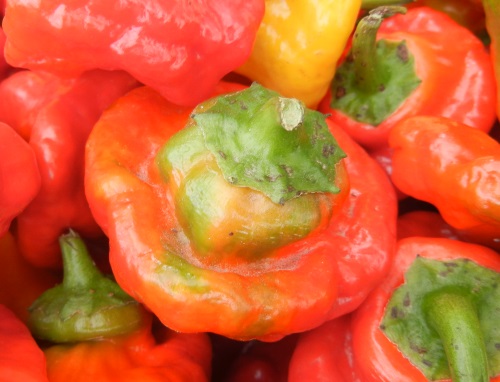
Rocotillo Chili Peppers
Origin: Peru but grown in Puerto Rico, Cuba, and Southern United States.
Color: Green/Yellow – to Red, Orange/Brown
Use: Soup, Stew, Salsa
Scoville:1500-2500
Hot Fact: This chili pepper may look small, but it packs a punch.

Santa Fe Grande Chili Peppers
Origin: New Mexico
Color: Green/Yellow – Orange – Yellow/Red
Use: Raw, salsa, sauces, grilling.
Scoville: 500-700
Hot Fact: This is also known as the guero chili pepper.

Senise Chili Pepper
Origin: Italy
Color: Red
Use: meats, soups, and stews.
Scoville: 400
Hot Fact: These peppers have a silky, sweet,and nutty flavor.
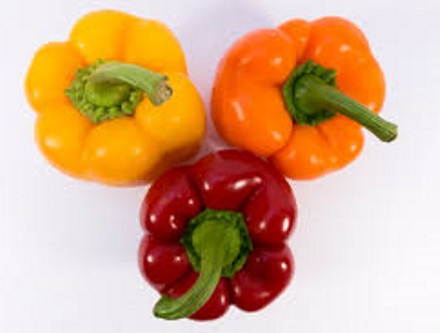
Sweet Bell Pepper
Origin: South America
Color: Red, yellow, or green.
Use: Raw, stuff, roast, grill, bake, sauce, stew soup, seasoning, and more.
Scoville: 0
Hot Fact: Bell peppers can also come in white, orange, or purple.

Tangerine Dream Chili Pepper
Origin: Mexico
Color: Orange
Use: pickled or on salad platters
Scoville: 0
Hot Fact: Bright and colorful, this pepper purely focuses on sweetness rather than the spice most peppers provide.
